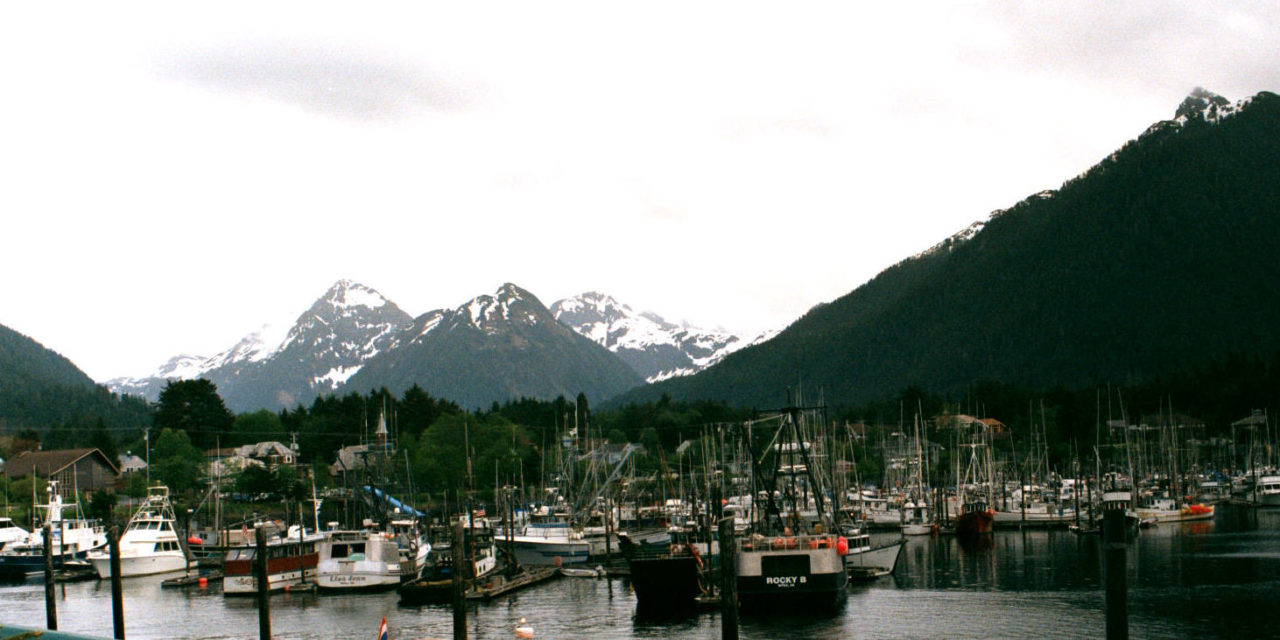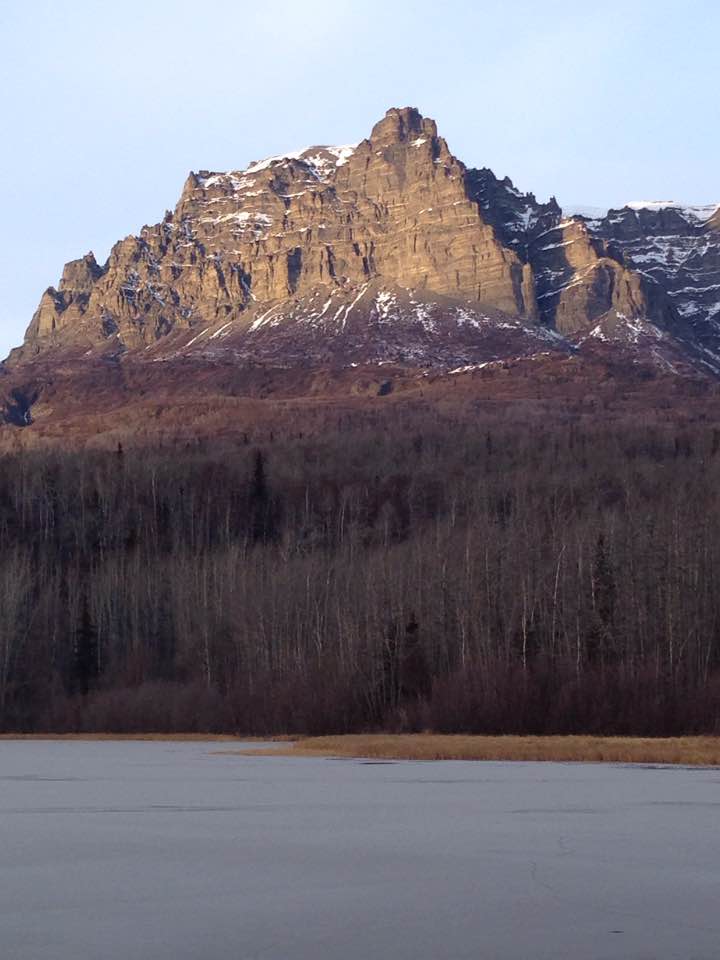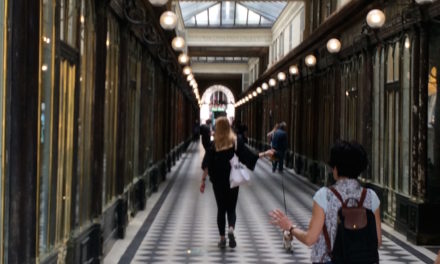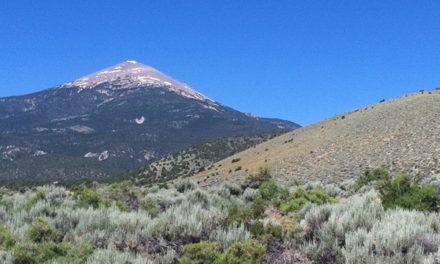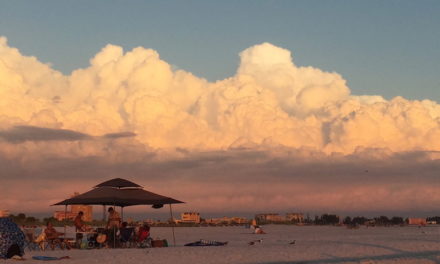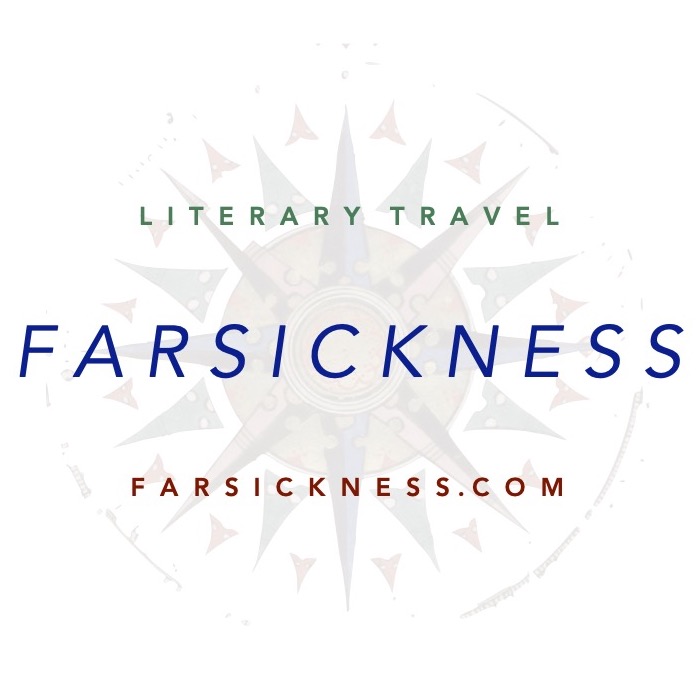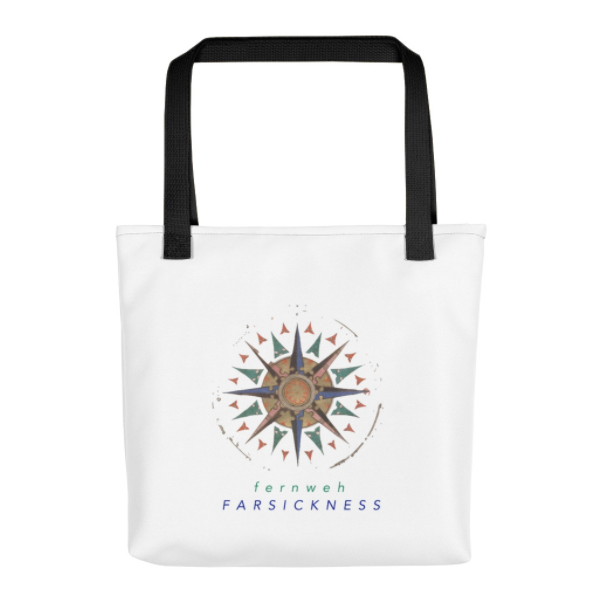Four Questions on Farsickness is an interview series with creative writers for whom place is essential to their work. Each writer answers the same four questions—and featured here is poet and essayist Caroline Goodwin.
1. Share a little about where you’re from. When you were growing up, what place — real or imagined — most fascinated you, and why?
I grew up in Anchorage, Alaska, a brutal and magical place. Some of my most vivid memories are the weekends we spent 80 miles north of the city in a place called Chickaloon, where my family has some land on a small lake. I spent hours walking the trails and roads and exploring the meadows of horsetail and field mint. There were wood frogs, grebes, loons, chickadees, squirrels, beavers, moose, wild dogs, spruce grouse and and many other critters, including (and I will swear this is true until the day I die) a Sasquatch. Being in this landscape had a profound affect on me; I remember lying on the frozen lake in the winter and watching the aurora borealis as the ice cracked and boomed. Also, growing up in a place where the seasons and the climate were so extreme gave me a deep connection to the rhythms of nature. I still remember the excitement I felt as a child when the first pussy willows came out along the creek at our back fence, and when the snow melted enough for the pavement to show through. We’d be playing kickball again soon! When I was twelve we moved to Maryland, which was a shock to the system. I never felt as safe on the trails there as I had at Chickaloon.
As a child I was also fascinated with Southeast Alaska, where my grandparents lived and where we would visit in the summers. Sitka was a very different place from Anchorage, in the Tongass National Forest and surrounded by old growth spruce-hemlock forest and steep mountains and islands. I sensed the differences in the landscape and also something darker and more frightening, which I now understand to be the legacy of trauma in my family. I think I was (and still am) fascinated by Southeast Alaska because it’s a very spiritual place, and there are many people working to preserve the traditional Tlingit culture. Northwest Coast First Nations art is some of the most beautiful in the world, I think, with its shapes within shapes that look like water. The songs and the culture are complex, and I have a lot of respect for the culture bearers who live throughout Southeast Alaska and are working hard every day at their art.
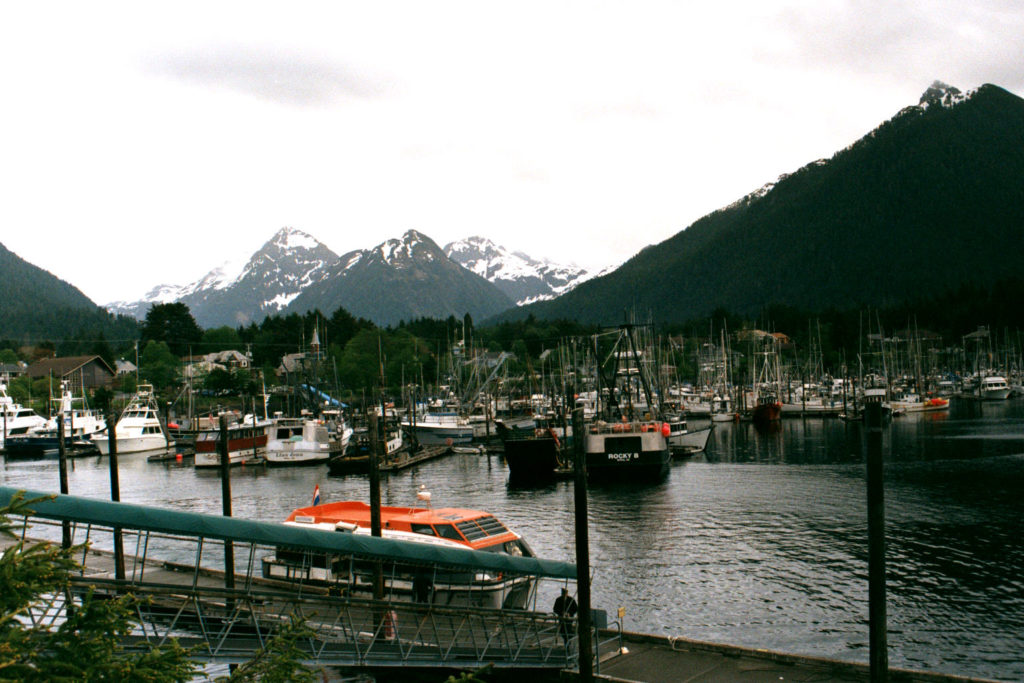
Sitka Harbor in Southeast Alaska (Credit: Robert A Estremo via Wikimedia Commons)
2. What travel has been a particular inspiration to your work?
Of course, my travels home to Alaska are particularly inspiring, because that connects me to the child I was and to the sensory experiences of that particular place. A couple of years ago I stayed in an AirBnB and my bedroom looked out over the very playground where I built snow forts as a child. It was in December, and it was dark and cold and snowing heavily. I felt like I was looking into my own private Narnia, it was completely magical! When I visited Anchorage in June 2016, I cruised around to the lakes and trails of my childhood, and the weather was unbelievable. People were out with their kids walking around the lagoon at 11:00 pm, and there was such abundant bird and plant life. I was very lucky, and that trip keeps giving me inspiration. Another trip that was particularly inspiring was a trip I made in 2012 to Wales, UK. There, I read at the Hay Poetry Jamboree and met such working poets as Graham Hartill, Scott Thurston, Lyndon Davies, John Goodby, Anthony Mellors, Allen Fisher, and Steven Hitchins. I follow their work and continue to feel connected to them, as the event was exceptional and, for me, being in a place where my ancestors lived and died was powerful.

Wales (Credit: Glasfryn Project)
3. Where do you “escape to” to recharge creativity?
I go camping with my pug, Jimi Hendrix. I try to get away to Mount Diablo at least once a year. I also go to Butano Park in Pescadero. I am happy in my Big Agnes Yellow Jacket 4 Mountain Glow tent, and I try to “detox” from all the media and overstimulation.
4. Where would you most like to travel to next?
I have a dream of editing an anthology of contemporary Mexican poets in translation who are writing about the environment. So, I would most like to travel to the book festival in Guadalajara. I studied Mexican poetry as a graduate student at the University of British Columbia and am trying to carve out the time and space to reconnect with it.
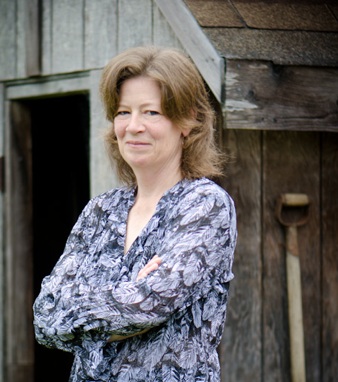 Caroline Goodwin’s poems and essays have been published in such journals as New Republic, Junction Box, Puerto del Sol, PRISM international, and others. She is the author of the poetry collections Text Me, Ishmael, Trapline, Peregrine, and The Paper Tree (forthcoming, 2017). From 2014 to 2016, she served as San Mateo County’s first Poet Laureate. She received an MFA from the University of British Columbia. Find her online on her website, www.carolinegoodw.com, or on Instagram: @c_goodw.
Caroline Goodwin’s poems and essays have been published in such journals as New Republic, Junction Box, Puerto del Sol, PRISM international, and others. She is the author of the poetry collections Text Me, Ishmael, Trapline, Peregrine, and The Paper Tree (forthcoming, 2017). From 2014 to 2016, she served as San Mateo County’s first Poet Laureate. She received an MFA from the University of British Columbia. Find her online on her website, www.carolinegoodw.com, or on Instagram: @c_goodw.

